landscape integration & environmental management in the service of a multipurpose pharmaceutical production unit
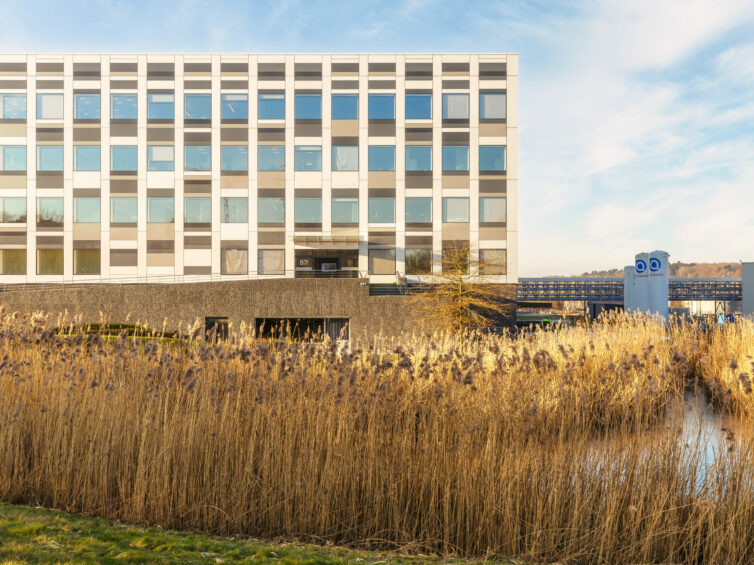
landscape integration & environmental management in the service of a multipurpose pharmaceutical production unit

Inflexio is an innovative and sustainable multiproduct biological production unit, recognized during its construction as one of the largest and most modern in Belgium. It is intended for late-stage pharmaceutical development and the commercial production of monoclonal antibody drugs, which will support the global launch of new UCB products.
The facility consists of two buildings: the production unit (Building B7), dedicated to the manufacturing of drug substances, and its utility building (B8). The complex also includes various external technical installations, either above ground or underground (tank farm, piperack, logistics retention yard, stormwater basins, rainwater collection and filtration systems for cooling towers, etc.).
From the initial feasibility studies in 2017 to the project’s delivery, assar has worked alongside UCB and various engineering firms (Jacobs, NNE, Exyte) on the design, as well as the technical and spatial coordination of all non-classified areas and functions.
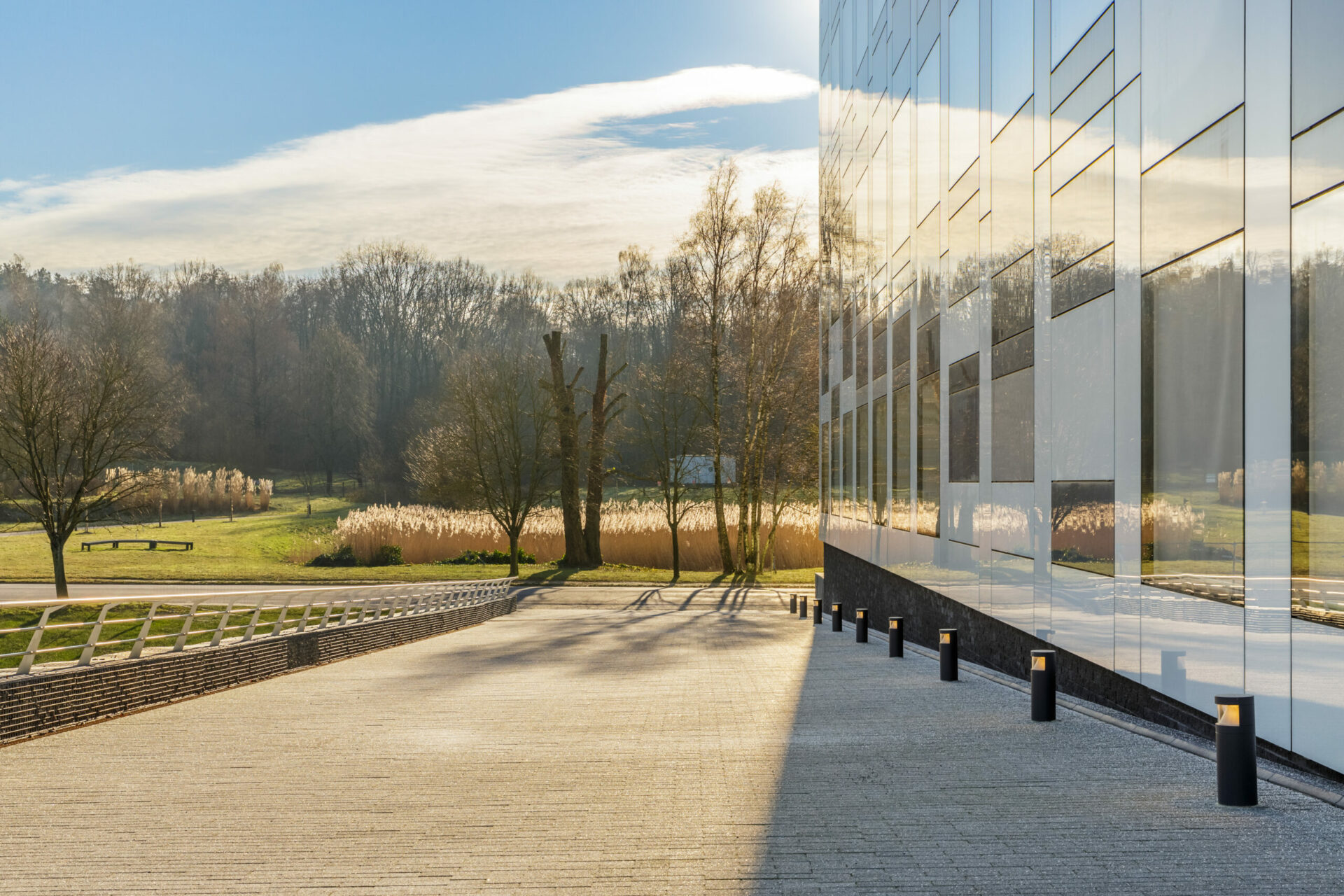
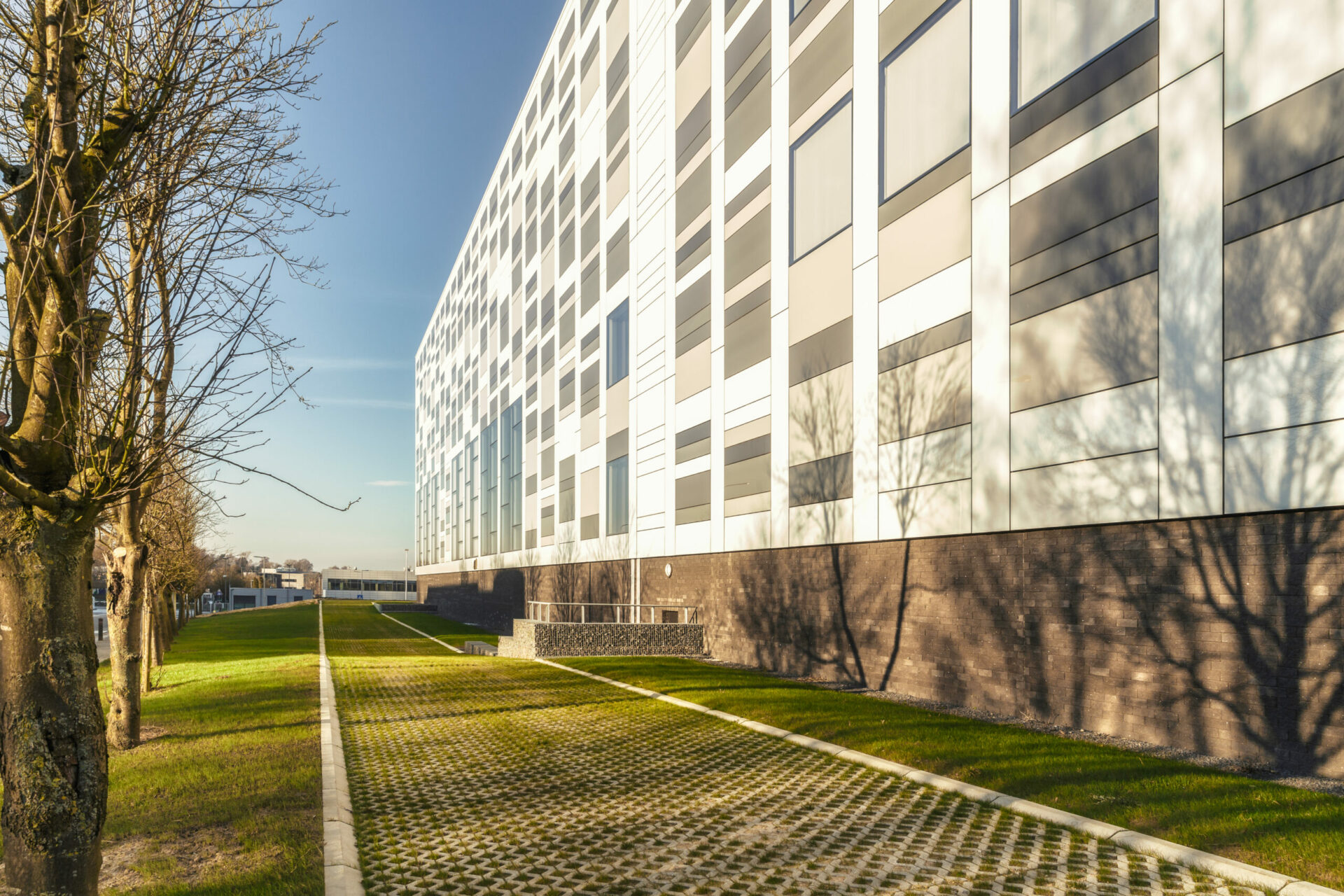
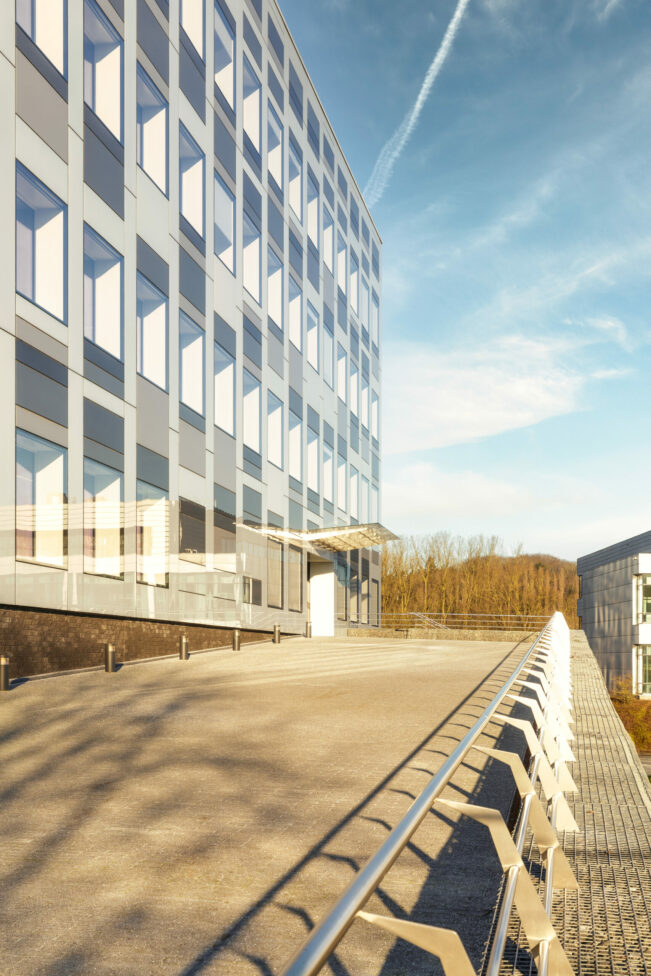
| program | design & implementation of functional & landscape development integrating water management & natural habitats for a pharmaceutical production unit & its utility facilities |
| client | UCB S.A. |
| address | avenue de l'Industrie B • 1420 Braine-l'Alleud |
| building type | care • research • work |
| status | completed |
| expertises | |
| offices | brussels |
| size | 26.100 sqm |
| team | • client: UCB S.A. • architecture: assar architects • interior architecture: assar architects • landscape architecture: assar architects • builder: Wanty • structural engineering firm: Exyte, Setesco • fluid engineering consultancy: Exyte, Almadius • specialized technical engineering firm: Exyte |
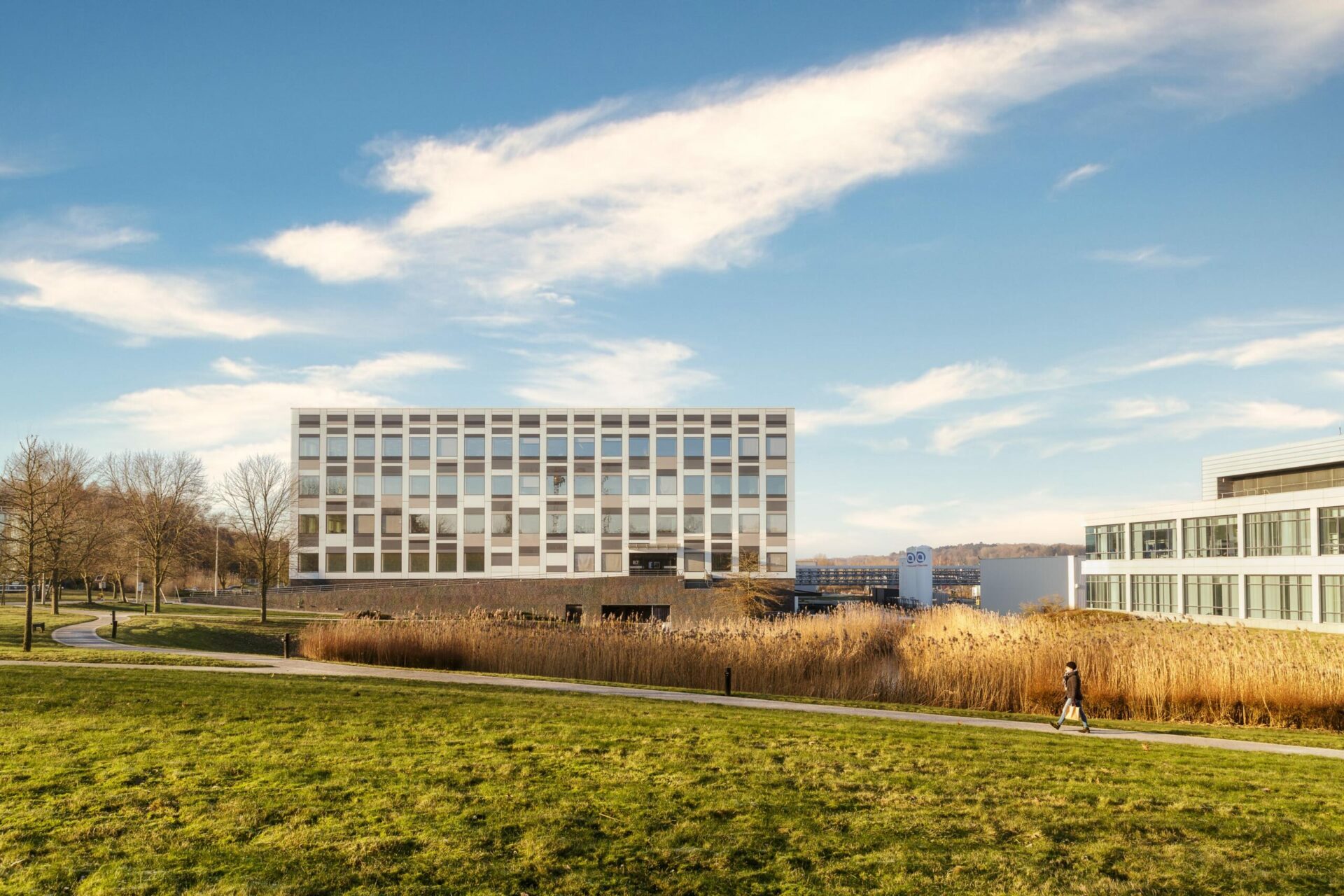
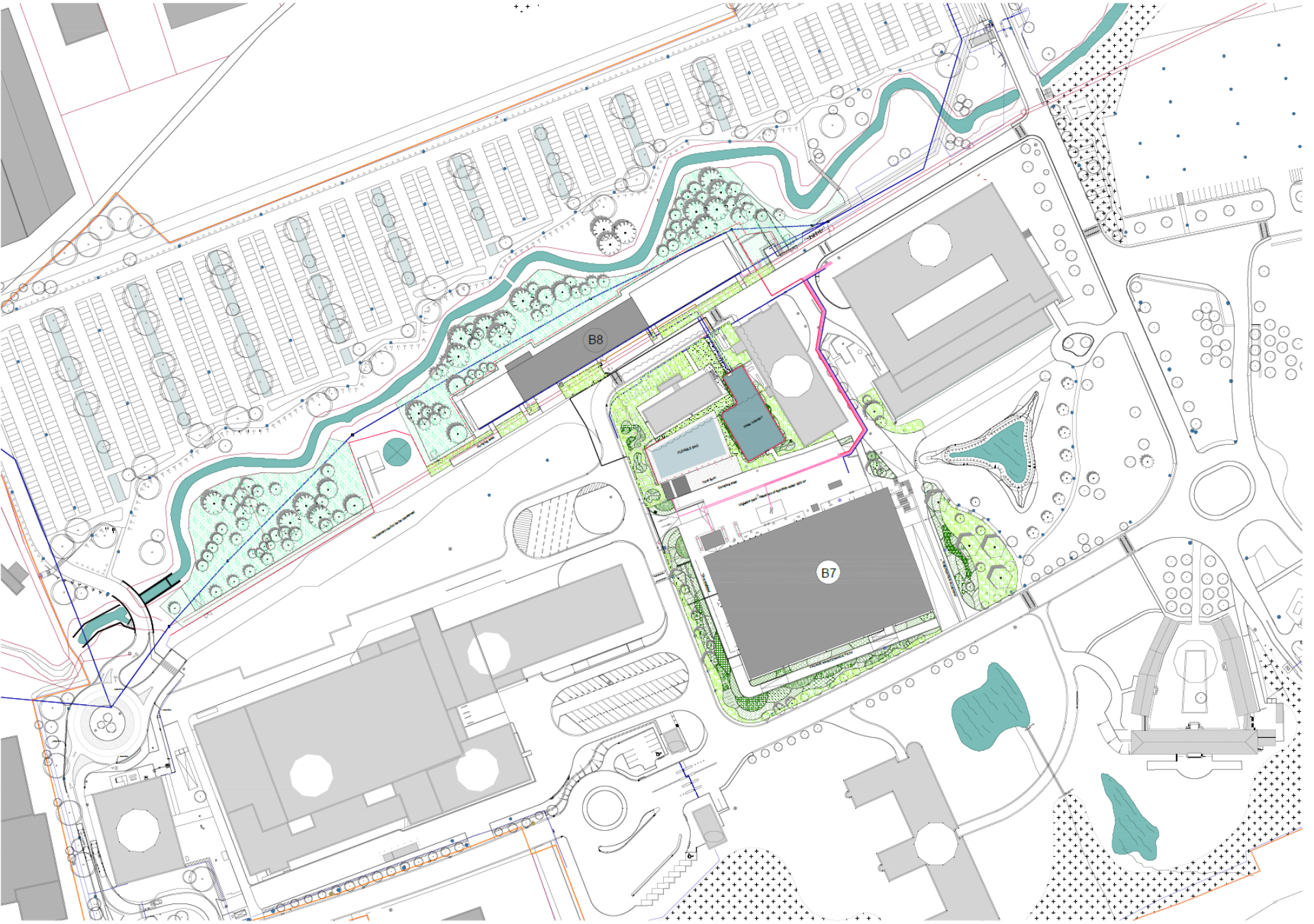
The Inflexio project is located within the UCB campus in Braine-l’Alleud. Traversed by a watercourse, the Hain River, and situated adjacent to the Foriest woods, this campus spans over 50 hectares and comprises around fifty buildings used daily by more than 2,000 people.
The reworking of its master plan and the establishment of a landscaped parking area along the river (both designed by the landscape team) have initiated a significant transformation of the site. These two projects have facilitated the reorganization of internal and external mobility, logistics flows, and pedestrian/cyclist routes, as well as the deployment of future industrial projects and a redesign of various landscaped areas of the site.
The landscape project of Inflexio is fully integrated into the implementation of this master plan by reactivating an ecological corridor that benefits local biodiversity.
To limit the visual impact of certain industrial installations, a new green network is developed along the project’s edge. It consists of 57 trees, shrub beds, hedges, and flowering meadows, increasing the biodiversity of the area and benefiting local wildlife by ensuring their passage through green zones. This network comprises indigenous species, pollinator-friendly plants, and helophytes adapted to the environment (wetland), integrated into the differentiated management program established by UCB.
Vegetation is densified around the buildings, particularly along the Hain river, enriching the natural appearance of the river alongside the landscaped parking area.
Situated in flood-prone areas, the external developments respond to various industrial and natural constraints. The creation of swales supports this integration and plays a crucial role as a regulator in the rainwater network, similar to various stormwater basins or natural retention zones. The design of the banks helps preserve the erosion of slopes while facilitating maintenance, as well as fire department access through grassed ramps.
The UCB campus site in Braine-l’Alleud is part of the Natagora Nature Network and promotes the presence of green areas in other parts of their site. It is integrated into the green and blue network, particularly within the Natura 2000 site BE31001 “Brabantian tributaries of the Senne” and between the two Sites of Grand Biological Interest.
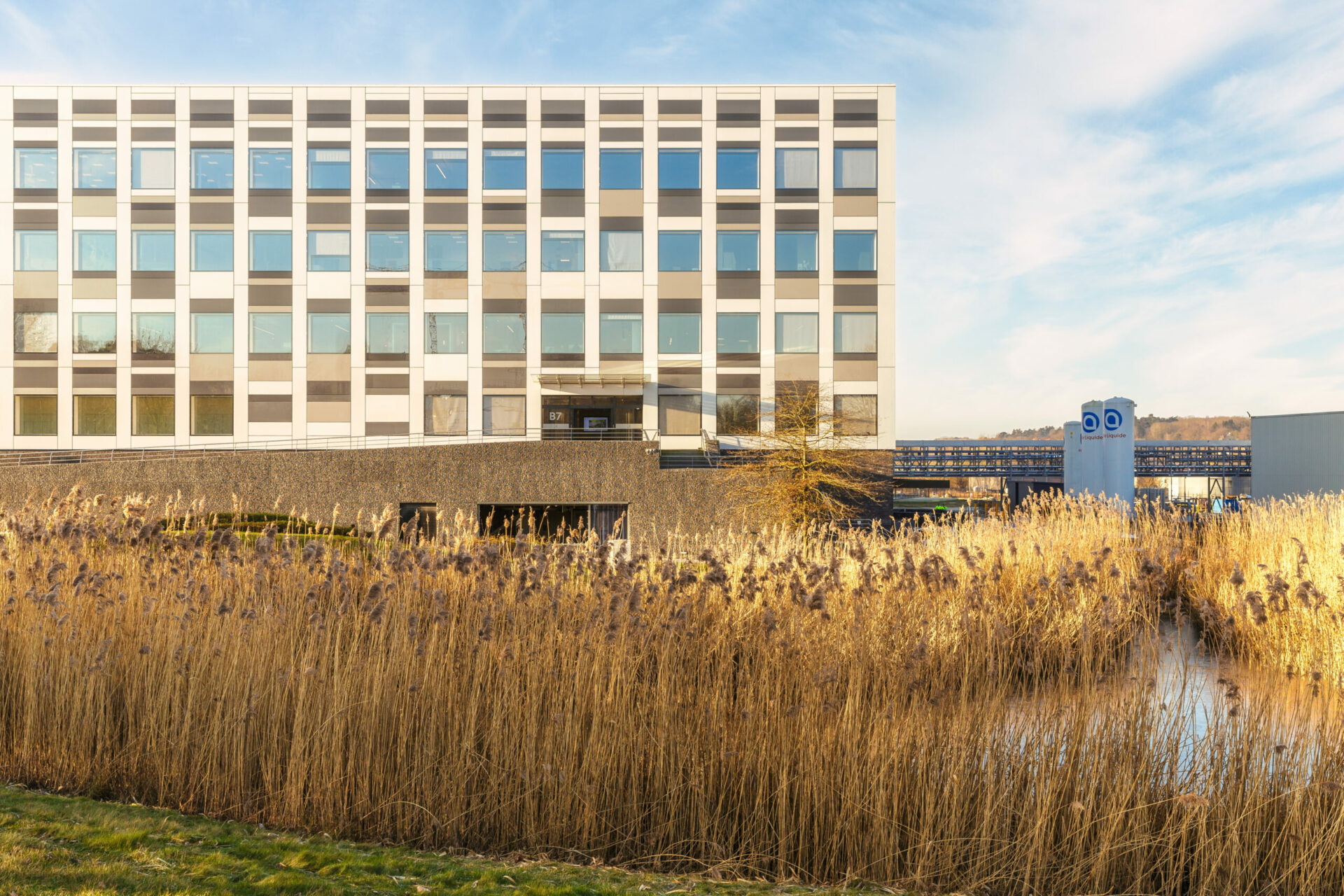
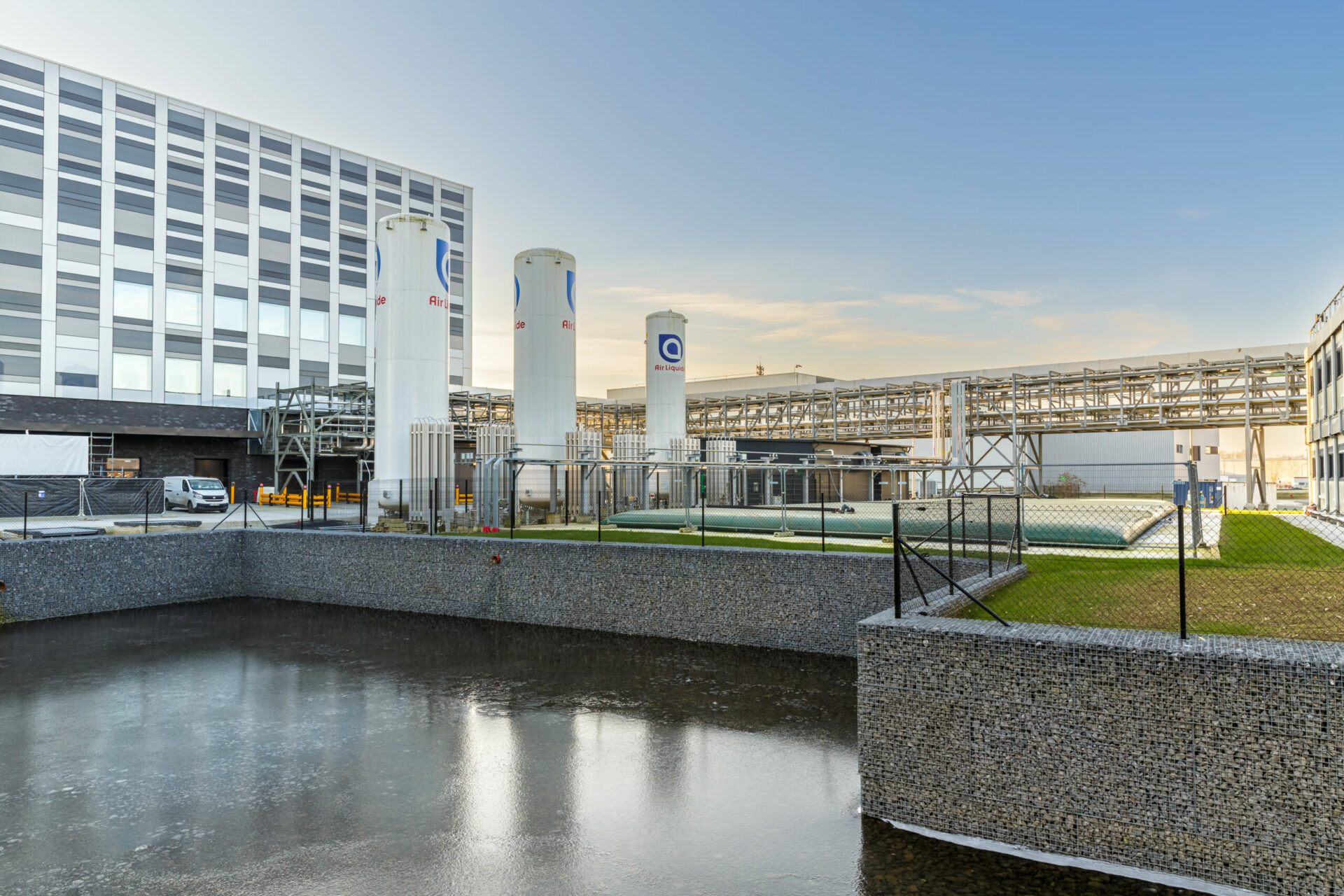
The project is located along the Hain river and is partially situated in a flood-prone area.
Considering this particularity, the design of the surroundings and stormwater management are based on the following principles:
1. combatting impermeabilization: as much as possible, surfaces consist of permeable or semi-permeable materials
2. retention: rainwater runoff from impermeable surfaces is directed to temporary retention facilities, which are either above ground, under slabs, or buried
3. strong limitation of discharge flow at the outlet of each facility
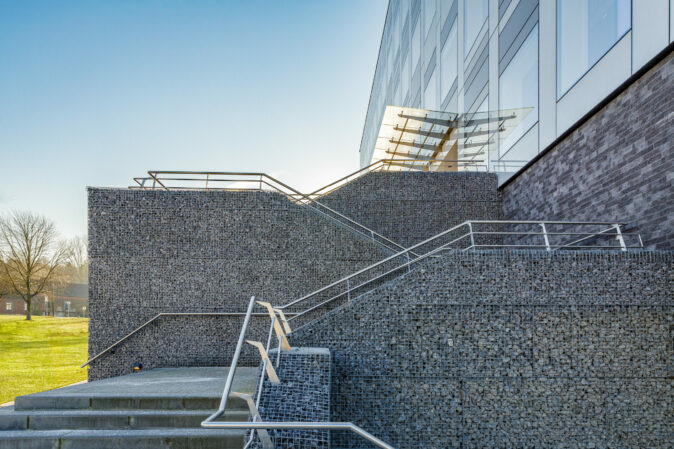
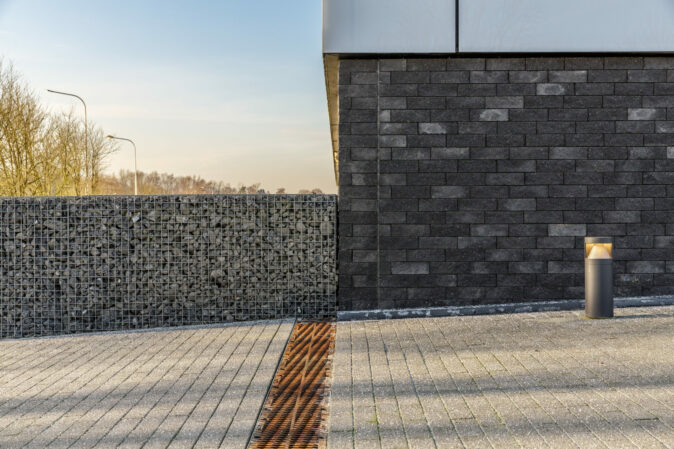
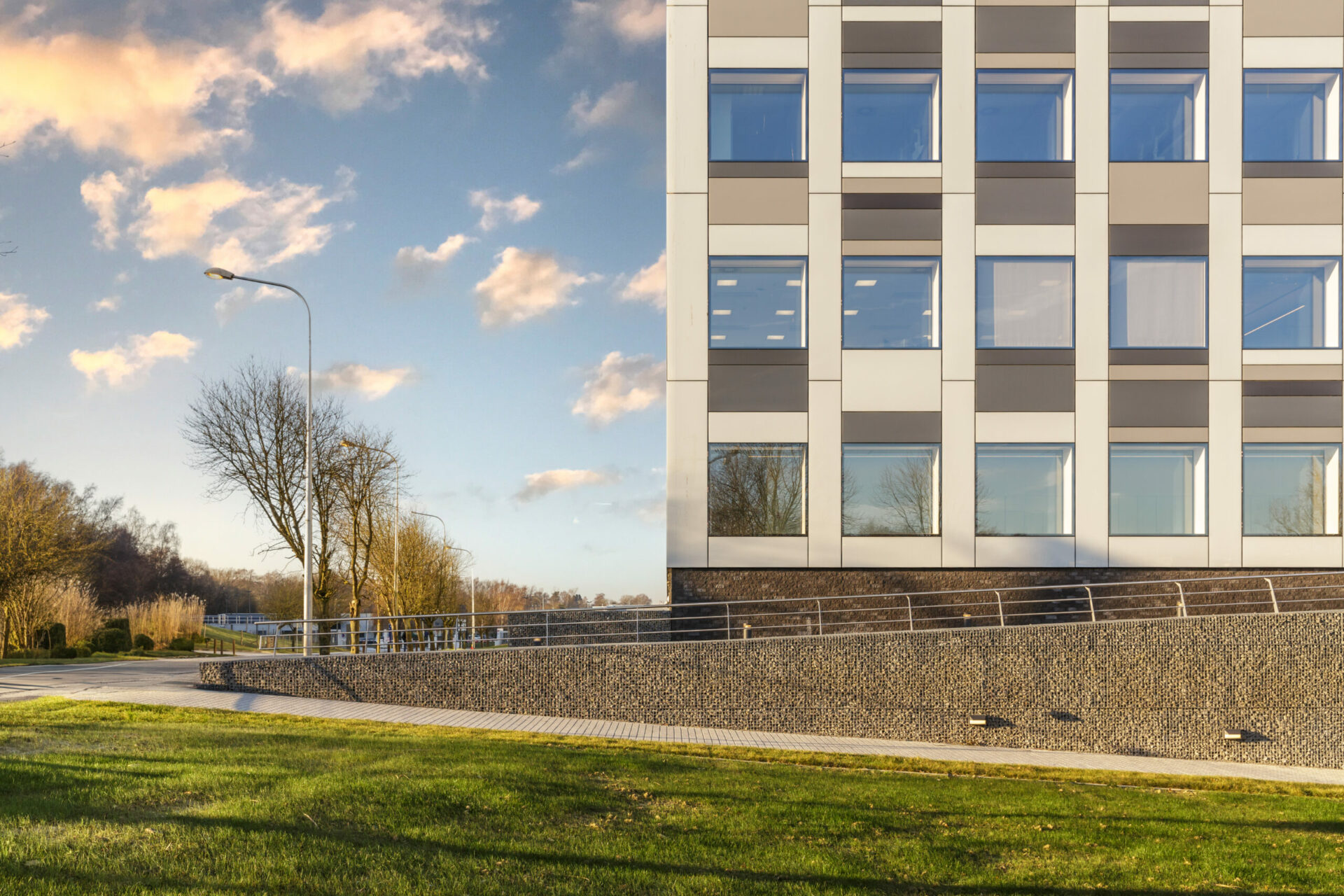
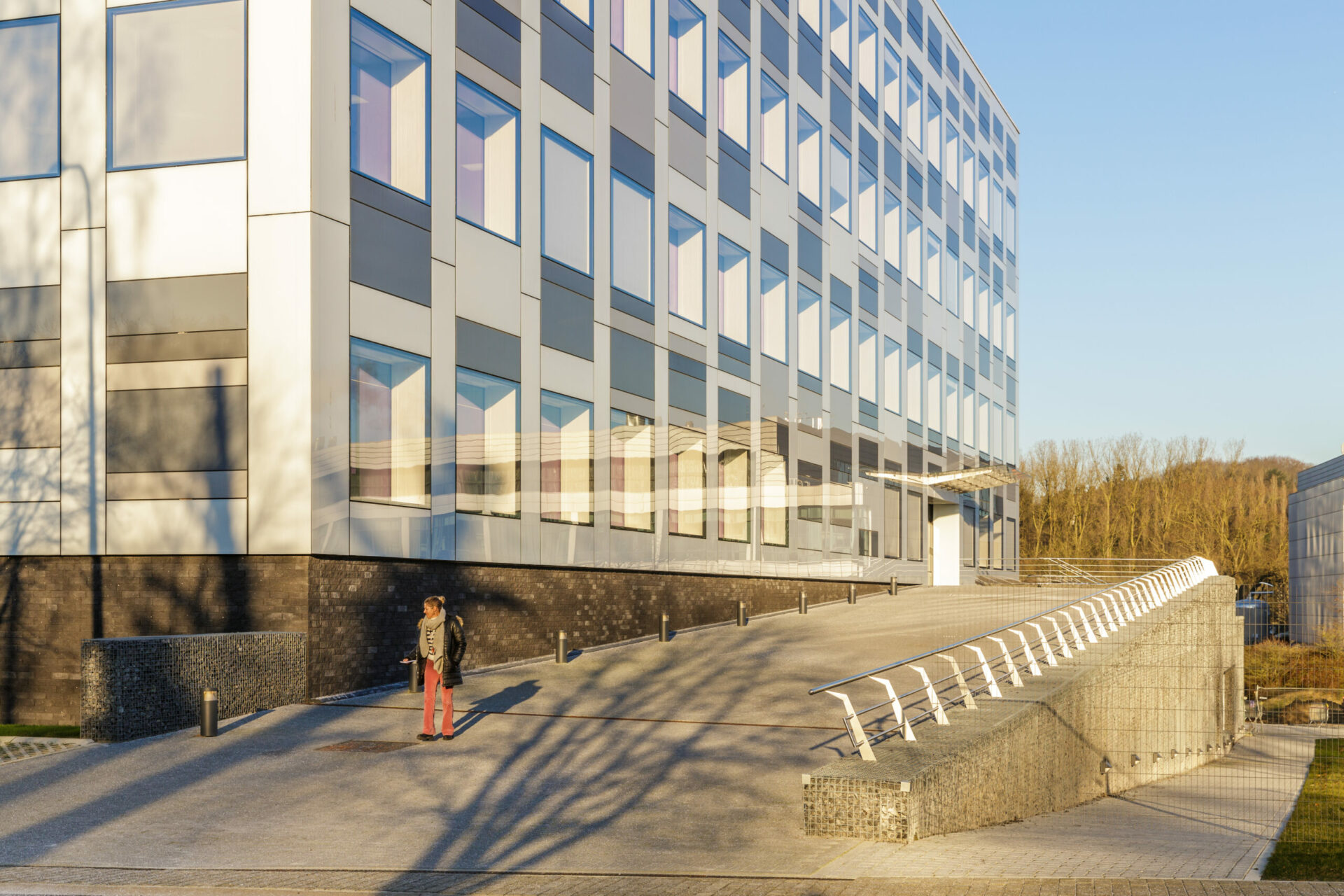
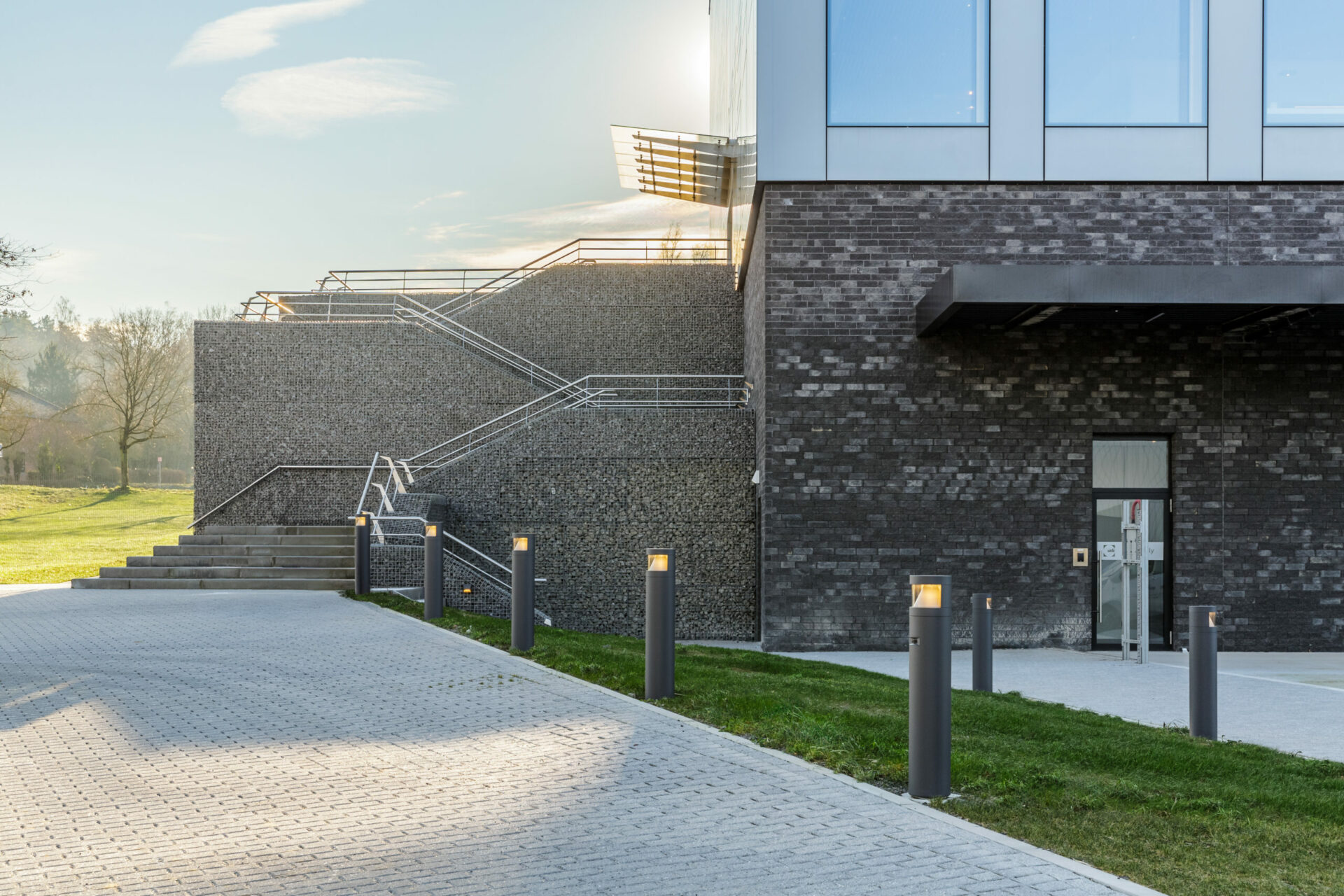
want to know more about assar or contribute to its continuous development